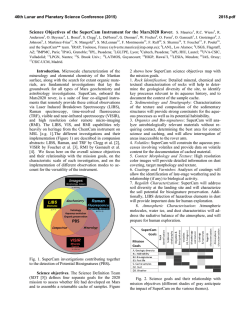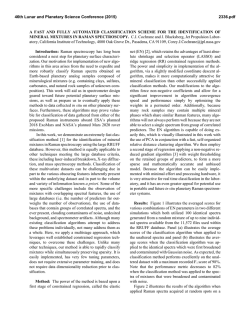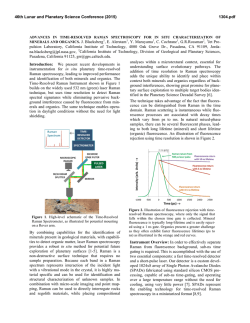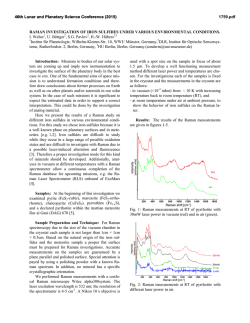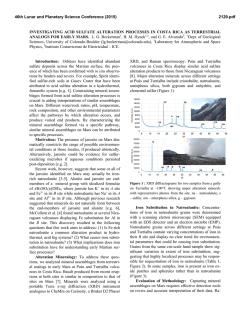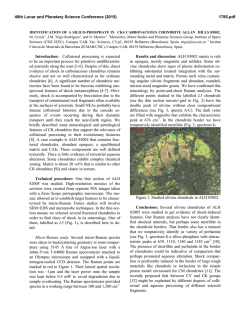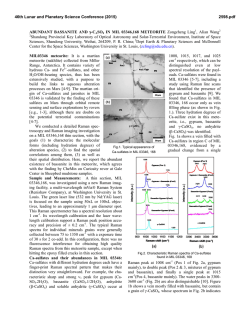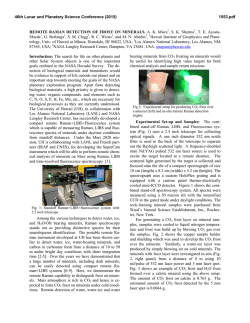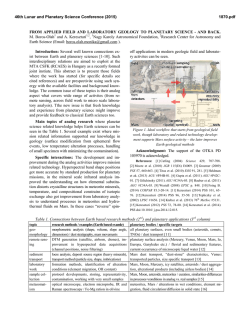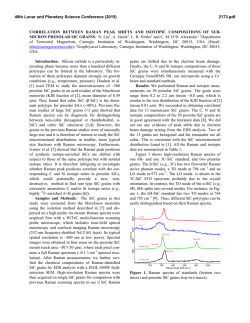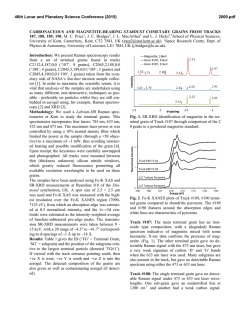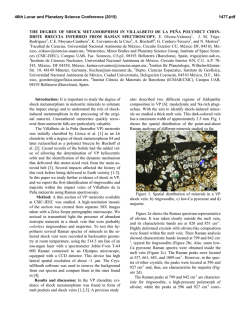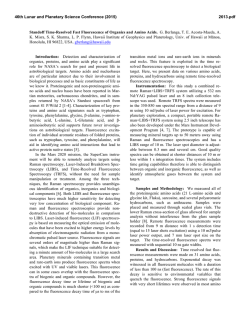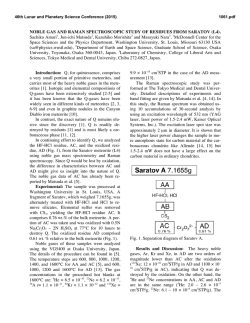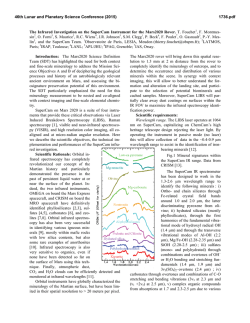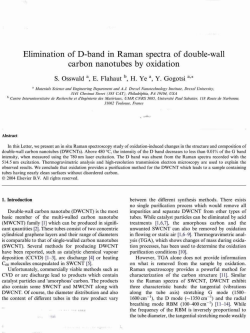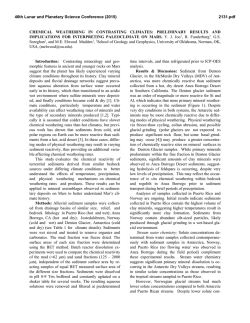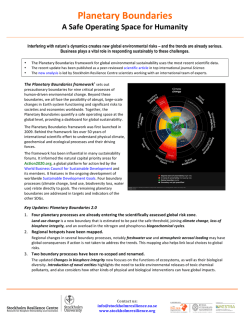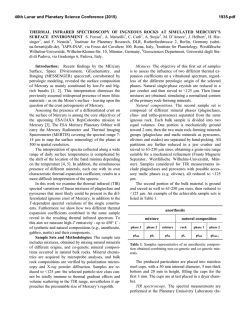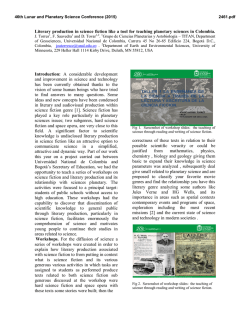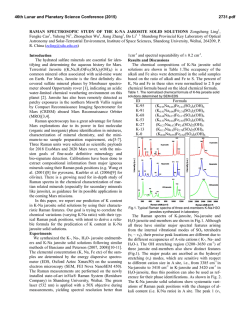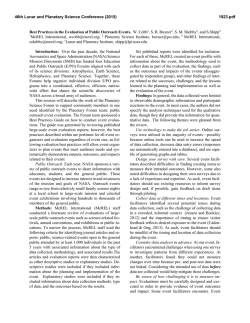
multispectral analysis of mars analog altered volcanic materials from
46th Lunar and Planetary Science Conference (2015) 3021.pdf MULTISPECTRAL ANALYSIS OF MARS ANALOG ALTERED VOLCANIC MATERIALS FROM FAROE ISLANDS. IMPLICATIONS FOR MISSIONS AS EXOMARS AND MARS 2020. A. Sansano1, R.J. Navarro1, J.A. Manrique1, J. Medina1, F. Rull1, and AMASE’14 Team, 1Unidad Asociada UVA-CSIC a traves del Centro de Astrobiologia (SPAIN) ([email protected]) Introduction: Faroe Islands comprised by > 6 km thick sequence of flood basalts linked to breakup of the North Atlantic. The sequence is more or less: • ≈ 60 Ma pre-breakup basalts with tuff/weathering horzions (Beinisvørð Fm) • Ca 60 – 56 Ma hiatus with extensive chemical weathering and deposition of lacustrine and fluvial sediments (Prestfjall + Hvannhagi Fm) • ≤ 56 Ma syn-breakup basalts with tuff/weathering horizons (Malinstindur + Enni Fm) Prestfjall and Hvannhagi Fm sediments have a very significant interest because they are Fluvial and lacustrine processing of basaltic weathering products in a warm & wet climate And Similar bulk compositions to sediments at Yellowknife Bay (Gale Crater)[1]. This campaign has been conducted with the support of AMASE, which has lasted over 10 years conducting research on Arctic campaigns analogous particularly in the archipelago of Svalbard, this being the first expedition that takes place outside the enclave. The analysis techniques have been used are Raman spectroscopy, either contact or distance, LIBS, FTIRATR, XRD and XRF. The instruments used in some cases are commercial as in the case of FTIR-ATR, in other cases they are prototypes for field already used in planetary mission or in process of being like the XRD (Terra-ChemMin) and Raman (RLS-Exomars), and finally we have also used prototypes with the objective of be used in future missions such as remote Raman or LIBS (ChemCam and SuperCam). The use of these techniques is based on multiple instruments future missions to Mars using these fundamentals for geochemical analysis of the materials to be found, in order to determine not only its current composition, but the possible formation mechanisms thereof. In addition to the Raman analysis in situ on field for the other analysis, we selected a series of samples from various locations on the island of Suduroy. Results: In situ analysis of different materials were performed by Raman spectroscopy using a prototype field equivalent to the one used in the ExoMars mission but adapted for contact measurements. Environmental conditions were not the most appropriate for such measures, yet they were able to get some spectra volcanic materials such as zeolites. Already in laboratory conditions, but variety of materials such as carbonates, oxides of iron, coal, etc. were found 46th Lunar and Planetary Science Conference (2015) 3021.pdf The combined use of spectroscopic techniques combined with each other, allow us to obtain an overview of geochemistry which took place at a given location, giving valuable information on potential processes that have taken place. If this can be done also in combination on a common sample (as Exomars) or by a single instrument (as SuperCam of Mars2020) allows by one shot have maximum information in a concise and accurate manner. References: [1] Grotzinger J. P. et al. (2014) Science, 343. Acknowledgements The team wish to thank AMASE and ESA organizations for the invitation and support to participate in the 2014 expedition. Also to Spanish MINECO Project AYA2012-39884-C02-02. By XRD was able to make a more extensive description of the materials that make up these complex also found wide variety of clays, carbonates with varying degrees of alteration. By LIBS, we deepened in the elemental analysis of samples, showing the predominance of iron in most of these materials and other items of interest such as manganese, calcium, etc. Finally, there has been some evidence of remote analysis by Raman these samples for improving the technique and adjusting the analysis of these analogs to apply these experiences to future missions. Conclusions: Suduroy complex has been shown as an excellent place to start practicing situ analysis of planetary analogs using multiple techniques thanks to its unique geology and its relatively easy access.
© Copyright 2026
